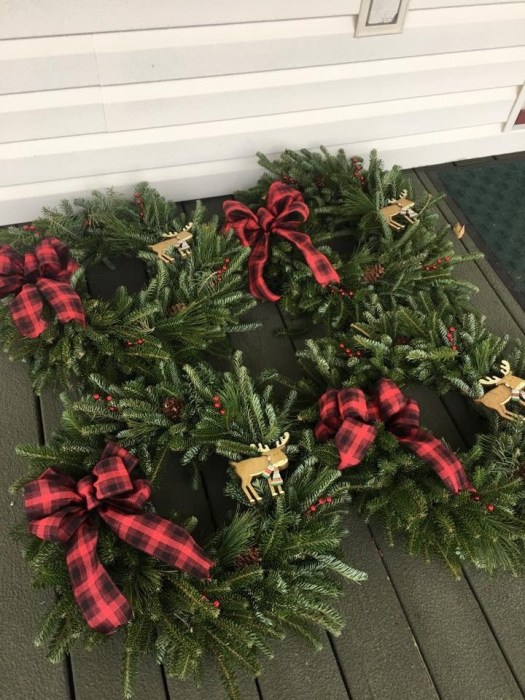Written and Contributed by TRACY CLELAND
First: Plan Ahead
1. Check out the Christmas tree farm ahead of time.
The Christmas tree is the central decoration in many homes this time of year. Although the real vs. artificial debate reigns supreme each year, I admit to being a fan of the real tree–I’ve never had or wanted anything else. A real tree, if cut fresh and kept watered, will last the entire season, filling your home with a wonderful aroma. Visiting a Christmas tree farm is a fun activity for family members of all ages. With 30+ years experience working on family-owned tree farm, I’d love to give you some tips for visiting a Christmas tree farm.
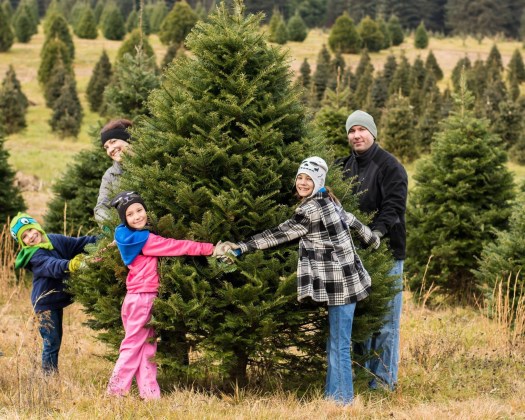
2. Know the farm’s hours.
Most farms open the weekend before or weekend after Thanksgiving. Many farms are only open until 5:00 p.m., and people often wonder why. The simple reason is that the fields aren’t lit. If the farm has several acres, chances are that there are no lights in the fields. It’s hard to pick out a tree by flashlight. It can be done–I’ve seen people do it– but I wouldn’t recommend it unless it’s absolutely necessary.
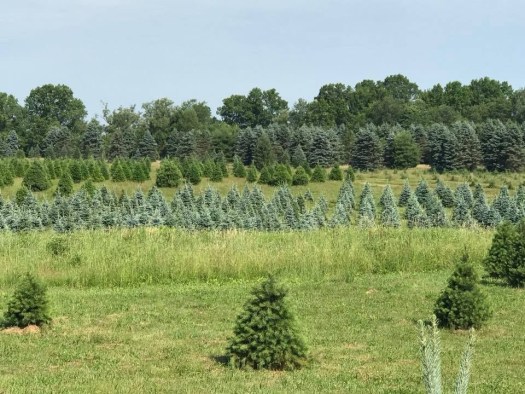
3. Learn what currency the farm takes.
Many farms take cash, checks, and credit or debit cards. Some only take cash. Others take a combination–credit and debit cards can be used for trees, wreaths, and roping, while concession stands may only take cash.
Many farms employ high school and college students. If an employee has been extra helpful, consider tipping him or her. The kids are always excited when someone tips them for helping carry their tree to a car. Tips aren’t necessary or expected, but they are appreciated.
4. Find out if Fido is welcome.
Some farms allow families to bring their pets to our farm, but not all farms do. If a farm allows dogs, the owners may require that the pets have current vaccinations and are on leashes.
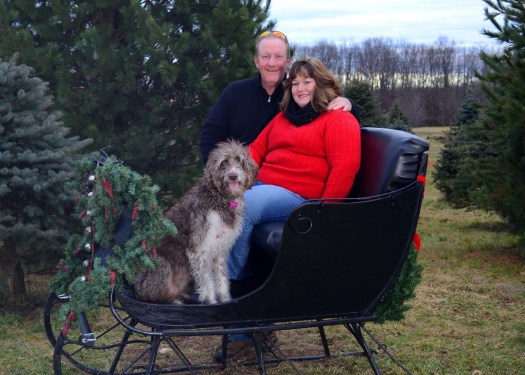
5. Know your trees.
Some tree farms have set prices for their trees. Others charge by the species and by height. Trees always look smaller in the field than they really are. Bringing a tape measure is always a good idea.
6. Be prepared.
Check if your farm provides saws. If not, bring your own. Bring tie-down straps and bungee cords to tie your tree to your car. Some farms provide string, but with larger trees, ratcheting straps are often easier and more secure. A tarp or blanket can also help keep the top of your vehicle from being scratched by the tree’s needles. Make plans for transporting your tree ahead of time if you need a tall tree and don’t own a truck. A ten-foot tree doesn’t fit well on top of a Chevy Spark.
Second: Dress for Success
7. Dress for the weather.
Check the forecast, and then check it again. Make sure that you’re actually looking at the location of the farm. Many of our customers drive an hour or more to our farm. The weather can be drastically different by the time they get here.
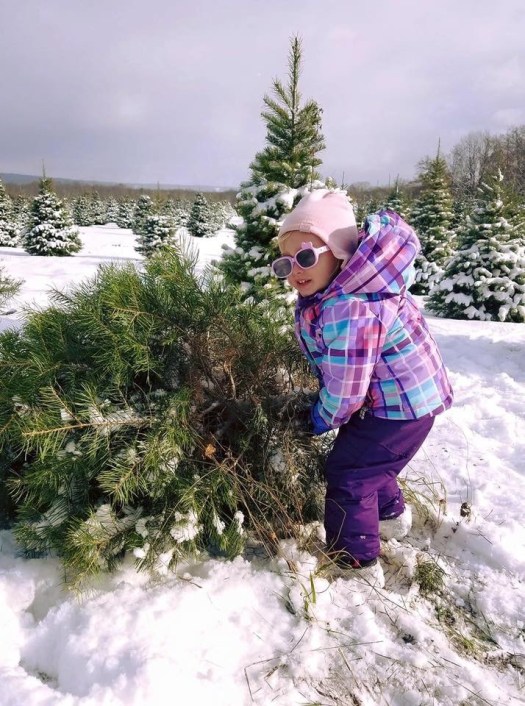
8. Err on the side of caution.
It’s better to have too many layers than not enough. An extra pair of mittens for your little one who has lost one of hers can be a lifesaver. And, don’t forget the thermal underwear and hats! Wind chills can be brutal. If your child has snow pants, bring them. Wear snow pants if the forecast is 20 degrees. If you have Carhartt-type clothing, use it.
9. Don’t wear fancy footwear.
Wear boots. I have seriously seen people come to cut down Christmas trees wearing high heels and flip flops. Just don’t. Farms are rough and often muddy. Wear sturdy shoes. I prefer my insulated Muck boots.
10. Wear clothes that can get dirty.
Grass. Snow. Mud. To cut a Christmas tree, most people kneel or lie on the ground. At a minimum, the knees in your jeans will get dirty. Your six-year-old could trip and fall in the mud or snow. If the ground isn’t frozen yet; mud is a real possibility. If you want to stay as clean as possible, think about bringing a small tarp, piece of plastic, or even a garbage bag to kneel or lie on while cutting your tree.
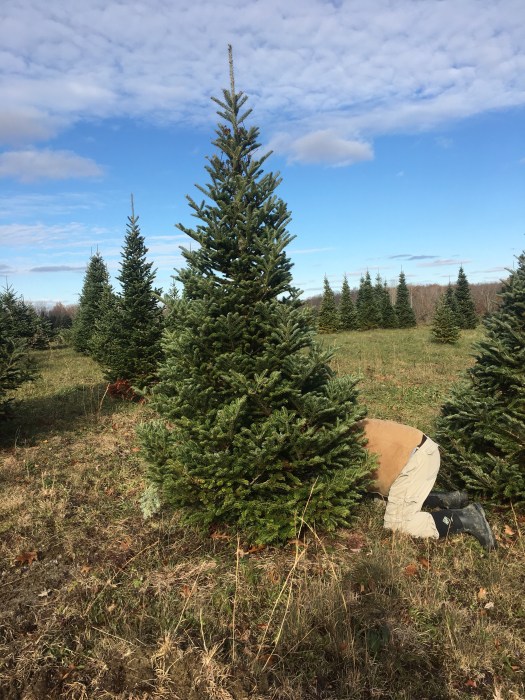
Also, watch where you are walking and look out for stumps and holes. A Christmas tree farm is a working farm, just like any other. We dig trees, and while we try to fill as many holes as possible, sometimes there are some that we just haven’t gotten to yet. And stumps? This time of year, with people cutting trees daily, there are tons of stumps!
Third: Have fun!
11. Enjoy your day in the country
Create new traditions at the Christmas tree farm. Hold a tailgate party with your friends and family. Take pictures and share them with us. We love to see families having fun on our farm. It’s a beautiful piece of property and we enjoy sharing it with others.
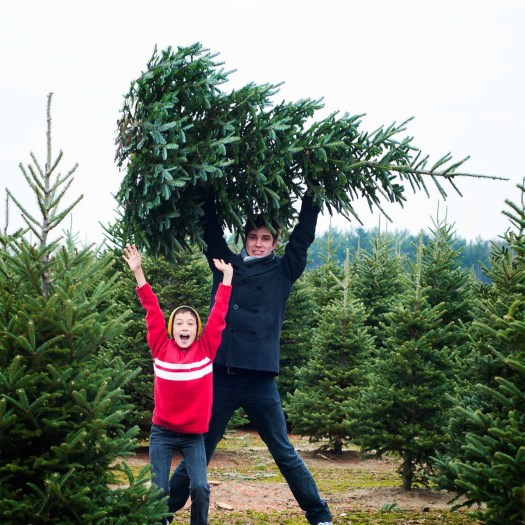
12. Share!
While there are many tips for visiting a Christmas tree farm that will help you, the customer, there is one that will benefit the growers. When you find a tree farm that suits you, talk about it. Most tree farms are family owned and operated – they don’t have large advertising budgets and rely on word of mouth to attract new customers.
Final Thoughts
If you do plan on visiting a Christmas tree farm this holiday season, be sure to plan ahead, dress for success, and most of all, have fun. And, if you live in Northeast Ohio, be sure to check out the Northeast Ohio Christmas Tree Growers page. You’ll be sure to find several wonderful family-owned and operated farms in their group directory.
I hope that you’ve enjoyed my tips for visiting a Christmas tree farm. For more information about my family and our adventures, visit our About Me page. And, if you happen to chance upon our farm, stop out and visit me at the wreath table.
